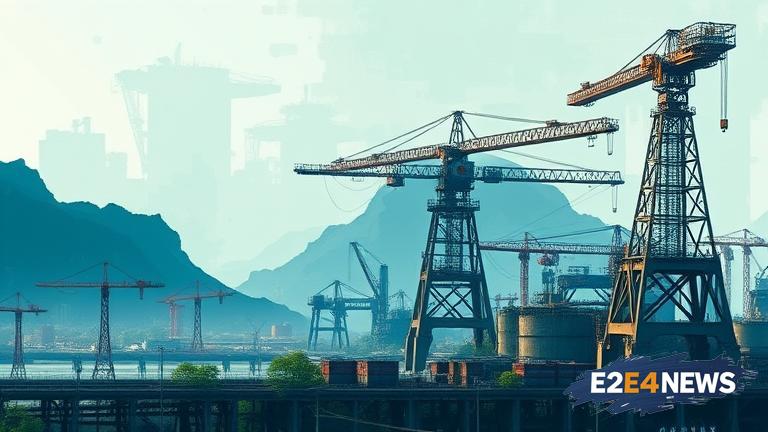China, the world’s largest steel producer, is undergoing a significant transformation in its steel industry. The country is shifting its focus towards green production, with a growing emphasis on reducing carbon emissions and increasing the use of renewable energy sources. This move is expected to have far-reaching implications for the global steel market, and Australia, in particular, is likely to feel the effects. As one of the world’s largest exporters of coal and iron ore, Australia’s economy is heavily reliant on these industries. However, with China’s steel industry going green, the demand for Australian coal and iron ore is likely to decline. This could have significant economic implications for Australia, including job losses and a decline in government revenue. The Australian government has been slow to respond to the changing global landscape, and the country’s lack of investment in renewable energy and green technologies has left it vulnerable to the shifting market trends. In contrast, China has been investing heavily in renewable energy and green technologies, and is now poised to become a global leader in the production of green steel. The Chinese government has set ambitious targets for reducing carbon emissions, and the steel industry is expected to play a key role in achieving these goals. The use of hydrogen and electric arc furnaces is becoming increasingly popular in China, as these technologies offer a more environmentally friendly alternative to traditional steel production methods. Additionally, China is investing in the development of new green steel production technologies, such as the use of biomass and carbon capture and storage. The shift towards green steel production in China is not only driven by environmental concerns but also by economic realities. The cost of producing green steel is decreasing, making it more competitive with traditional steel production methods. Furthermore, the Chinese government is offering incentives and subsidies to companies that invest in green steel production, making it an attractive option for businesses. The implications of China’s green steel industry for Australia are significant. The country’s coal and iron ore exports are likely to decline, and the government will need to find new ways to diversify the economy. Investing in renewable energy and green technologies could be a viable option, but it will require significant investment and a shift in government policy. The Australian government has been criticized for its lack of action on climate change, and the country’s reliance on fossil fuels has left it vulnerable to the changing global market trends. In order to remain competitive, Australia will need to adapt to the new reality and invest in green technologies and renewable energy. The future of the steel industry is likely to be shaped by the growing demand for green and sustainable products, and countries that fail to adapt to this new reality will be left behind. China’s green steel industry is a wake-up call for Australia, and the country must take action to diversify its economy and invest in green technologies. The economic implications of failing to do so could be severe, and the country’s reliance on fossil fuels could become a significant liability. As the world transitions towards a more sustainable and environmentally friendly future, Australia must be prepared to adapt and invest in the technologies of the future. The shift towards green steel production in China is a significant development, and it poses a major challenge to Australia’s economic reliance on coal and iron ore exports. The country must take action to diversify its economy and invest in renewable energy and green technologies in order to remain competitive in the global market.
